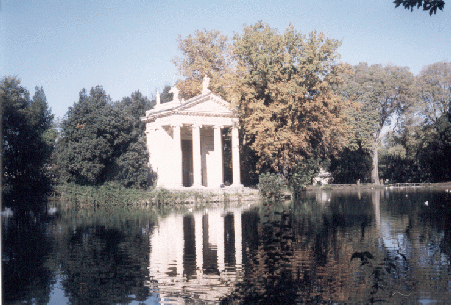|
|
B&B in Rome
|
Rome Downtown:Piazza del popolo |
|
|
B&B in Rome
|
Rome Downtown:Piazza del popolo |
VILLA BORGHESE

|
In the 19th century much of the garden's former formality was remade as a landscape garden in the English taste (illustration, right). The Villa Borghese gardens were long informally open but were bought by the commune of Rome and given to the public in 1903. The large landscape park in the English taste contains several villas. The lead up to this park, and there is another entrance at the Porte del Popolo by Piazza del Popolo. The Pincio (the Pincian Hill of ancient Rome), in the south part of the park, offers one of the greatest views over Rome. |
The Borghese Gallery (Italian: Galleria Borghese) is a former villa, the Villa Borghese Pinciana ("Borghese villa on the Pincio") in the eponymous park of the Villa Borghese in Rome. It houses a substantial collection of paintings, sculpture and antiquities begun by Cardinal Scipione Borghese, the nephew of Pope Paul V (reign 1605–1621). The Villa was built by the architect Flaminio Ponzio, developing sketches by Scipione Borghese, who used it as a villa suburbana, a party villa, at the edge of Rome.
Many of the sculptures are displayed in the spaces they were
intended for, including early works commissioned Gian Lorenzo Bernini by his
first patron Scipione. Napoleon Bonaparte's sister Pauline married into the
Borghese family and Antonio Canova's half-nude reclining portrait of her as
Venus Victrix takes pride of place in one of the galleries. A famously
controversial woman in her lifetime, when asked how she could pose for the
sculptor wearing so little, she reputedly replied that there was a stove in the
studio that kept her warm. Scipione Borghese was an avid collector of works by
Caravaggio, who is well represented in the collection by his Boy with a
Basket of Fruit, St. Jerome, Young Sick Bacchus, and others. Other
paintings of note include Titian's Sacred and Profane Love, Raphael's
Deposition and works by Peter Paul Rubens and Federico Barocci.
|
|
|
|
TRANSPORT:
Metro Line | Rome downtown transport | Rome night transport | Subway and Urban Rail Lines | Map of
Transport | |